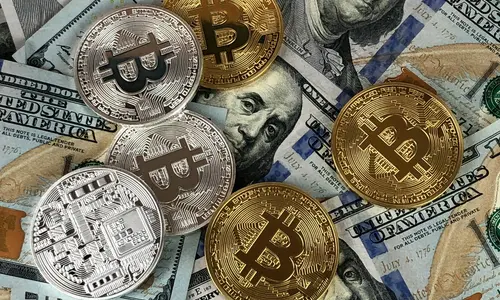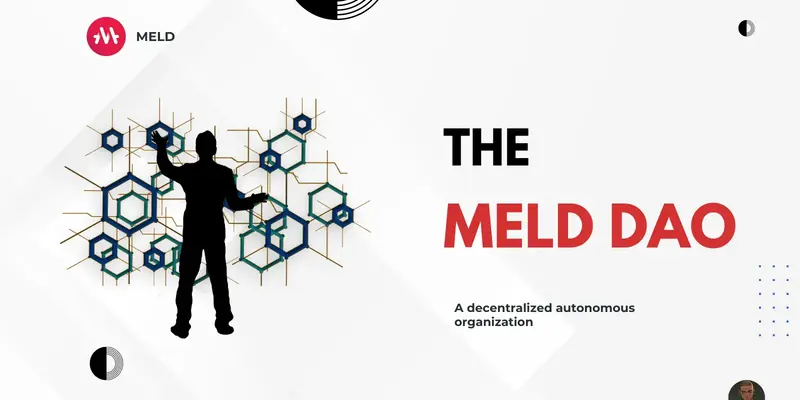Do You Know The Difference Between Defi and Tradfi? is a question you should probably ask yourself. I am well aware that most people use this terms some times without actually knowing the major differences between both of them.
Now today I am putting out this article to properly educate you on what this two factions actually entail starting with Defi;
What is Defi?
In the simplest form “Defi” simply means decentralized finance, while in the broader sense “Defi” is a broad term used to describe a new financial system built on blockchain technology that operates without relying on traditional banks, brokers, or other financial intermediaries.
DeFi uses smart contracts self-executing contracts with the terms of the agreement directly written into code to enable a wide range of financial activities, such as lending, borrowing, trading, and earning interest, all in a decentralized manner.
Key Features Of Defi
Now I will break down the features of “Defi” that makes it stand out from “Tradfi”
- Decentralization: Unlike traditional finance, which is controlled by centralized institutions like banks, DeFi operates on decentralized networks, typically using blockchain technology. This means that no single entity has control over the system, and transactions are verified and recorded on a distributed ledger.
- Transparency: All transactions on a DeFi platform are recorded on the blockchain, which is a public ledger. This ensures that all actions are transparent and can be audited by anyone.
- Accessibility: DeFi platforms are open to anyone with an internet connection. There are no barriers based on location, credit score, or banking history, making financial services more accessible to people worldwide.
- Interoperability: Many DeFi applications can interact with each other, creating a vast ecosystem where different services and platforms work together. This allows users to combine various DeFi services to meet their financial needs.
- Programmability: DeFi platforms are built using smart contracts, which are programmable. This allows for the creation of complex financial products and services
Now Lets talk about its counterpart that is “Tradfi”
What Is Tradfi?
Now just like Defi “Tradfi” simply refers to Traditional Finance. In a broader sense It refers to the conventional financial system that has been in place for decades, involving centralized institutions like banks, credit unions, stock exchanges, and government-regulated financial entities. Unlike the decentralized nature of DeFi (Decentralized Finance), TradFi operates through established institutions that act as intermediaries in various financial transactions.
Key Features of TradFi
- Centralization: In TradFi, financial activities such as lending, borrowing, trading, and investing are managed and controlled by centralized institutions. These institutions include banks, insurance companies, and stock exchanges, which act as intermediaries between individuals and financial markets.
- Regulation: TradFi is heavily regulated by governments and financial authorities. These regulations are designed to protect consumers, ensure the stability of the financial system, and maintain trust in the market. Regulatory bodies like the Federal Reserve in the U.S., the European Central Bank (ECB) in Europe, and the Securities and Exchange Commission (SEC) play significant roles in overseeing the financial system.
- Limited Accessibility: Access to TradFi services can be restricted by factors such as geographic location, credit history, and socio-economic status. Not everyone has equal access to banking services, loans, or investment opportunities, and certain financial products may only be available to those who meet specific criteria.
- Intermediation: In TradFi, intermediaries like banks or brokers facilitate transactions. For example, if you want to buy a stock, you typically do so through a broker who handles the transaction on your behalf. Similarly, banks manage the process of lending and borrowing money.
- Transparency and Privacy: While TradFi transactions are regulated and documented, they are not as transparent as those in DeFi. Information about financial transactions is often not publicly available, and there is a level of privacy maintained between customers and institutions.
- Legacy Systems: TradFi relies on established, sometimes outdated, systems and infrastructure. While these systems are often stable and secure, they can also be slower to adopt new technologies compared to the more agile DeFi space.
Difference Between Defi and Tradfi?
While TradFi has long been the backbone of global finance, DeFi represents an emerging alternative that seeks to democratize access to financial services, reduce costs, and increase transparency by eliminating intermediaries and leveraging blockchain technology.
The difference between Traditional Finance (TradFi) and Decentralized Finance (DeFi) lies in their fundamental structure, operation, and accessibility. Here’s a breakdown of the key distinctions:
Centralization vs. Decentralization
- TradFi: Operates through centralized institutions like banks, stock exchanges, and government agencies. These entities act as intermediaries, controlling and managing financial transactions and services.
- DeFi: Operates on decentralized networks, typically using blockchain technology. There are no central authorities or intermediaries; instead, smart contracts automatically execute transactions.
Regulation
- TradFi: Heavily regulated by governments and financial authorities to ensure consumer protection, market stability, and legal compliance. Examples include the Federal Reserve (U.S.), European Central Bank (ECB), and the Securities and Exchange Commission (SEC).
- DeFi: Operates in a relatively unregulated space, though this is evolving. While DeFi offers more freedom, it also comes with higher risks due to the lack of formal oversight.
Transparency
- TradFi: Transactions and operations are typically opaque to the public, with financial data controlled and protected by the institutions involved. Consumers trust these institutions to manage their data securely.
- DeFi: Transactions are recorded on a public blockchain, making them transparent and accessible to anyone. This transparency is one of DeFi’s core principles, allowing users to verify and audit transactions.
Accessibility
- TradFi: Access to financial services can be limited by geographic location, credit score, socio-economic status, and other factors. Not everyone can easily participate in the global financial system.
- DeFi: Open to anyone with an internet connection, providing a more inclusive financial system. There are no barriers based on location or financial history, making it accessible to a global audience.
Intermediation
- TradFi: Requires intermediaries (banks, brokers, etc.) to facilitate transactions. These intermediaries earn fees and have significant control over the financial processes.
- DeFi: Eliminates intermediaries by using smart contracts to automate transactions. This reduces costs and speeds up processes, but also transfers the responsibility of managing assets to the user.
Security and Trust
- TradFi: Relies on established institutions and regulatory frameworks to ensure security. Consumers trust these entities to protect their funds and personal information.
- DeFi: Relies on blockchain technology and cryptography for security. Trust is placed in the technology and the decentralized network rather than a central authority. However, this also means users must be cautious and informed to avoid risks like smart contract vulnerabilities or scams.
Speed and Efficiency
- TradFi: Can be slower due to regulatory processes, bureaucracy, and the involvement of multiple intermediaries. Transactions, especially international ones, can take days to settle.
- DeFi: Transactions are generally faster, often completed in minutes or seconds, as they occur directly on the blockchain without the need for intermediaries.
Innovation and Flexibility
- TradFi: Operates on established, sometimes outdated, systems. Innovation is often slow due to regulatory constraints and the need to maintain stability and trust.
- DeFi: Rapidly evolving, with new financial products and services being developed continuously. The open-source nature of DeFi encourages experimentation and innovation, though this can also lead to instability and risks.
Financial Products
- TradFi: Offers traditional financial products like savings accounts, loans, insurance, and investment funds, typically with lower interest rates due to the involvement of intermediaries.
- DeFi: Provides innovative financial products like yield farming, liquidity pools, decentralized exchanges (DEXs), and crypto-backed loans. These often offer higher returns but come with higher risk.
User Control
- TradFi: Users rely on financial institutions to manage their money, investments, and transactions. The institution has significant control over the user’s assets.
- DeFi: Users have full control over their assets. They manage their own private keys and are responsible for securing their funds and interacting with DeFi protocols.








